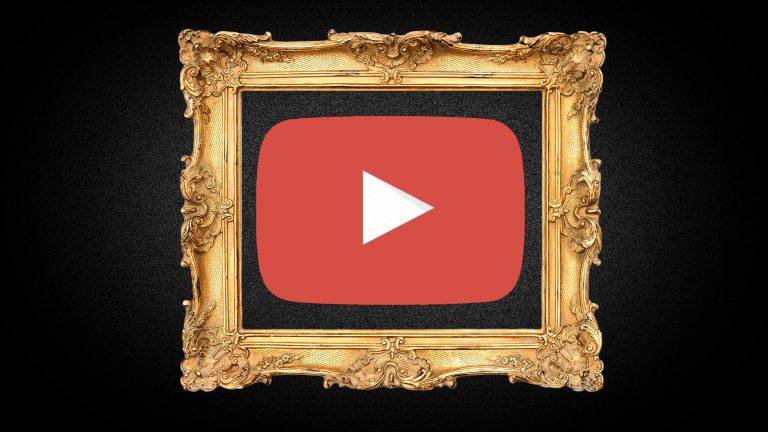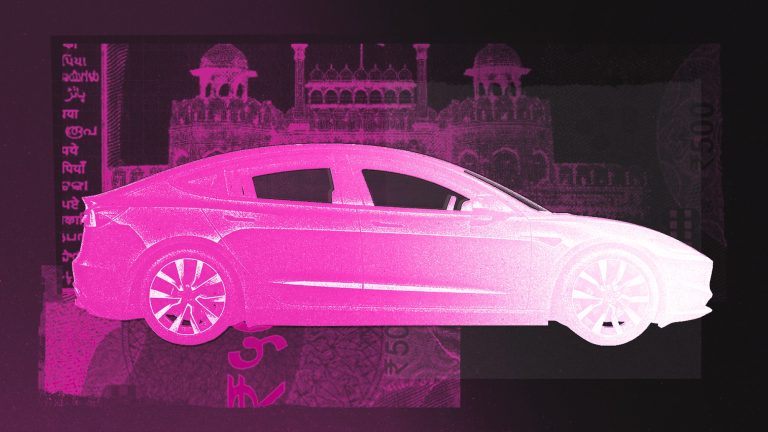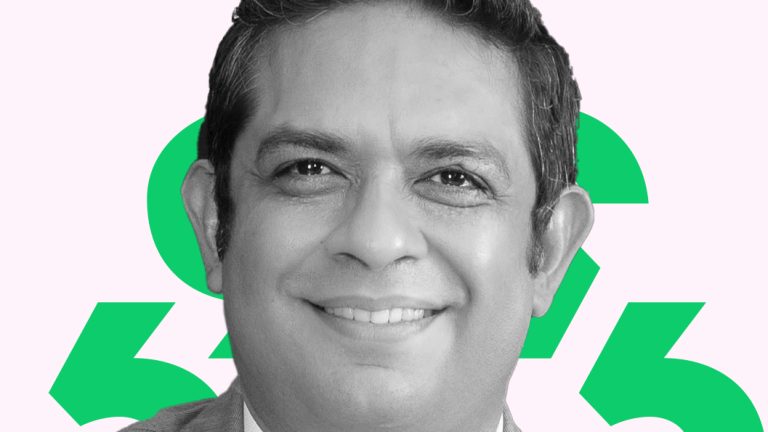This March, when U.S.-based AI researcher Anand Ahuja launched CTRHero, “an AI to replace Thumbnail Artists,” he called it “his life’s work.” Trained on millions of successful thumbnails from various social media platforms, CTRHero could create thumbnails within minutes, reproducing faces with 99% accuracy, according to Ahuja. The tool outraged designers who felt their livelihoods were suddenly at stake: some threatened Ahuja with physical violence. Soon after its launch, Ahuja sold off the core technology for CTRHero.
“Some of the pushback from people was understandable, but, for me, it is wiser to avoid distractions and continue building,” Ahuja told Rest of World. “It is not the main reason for stepping back though: the main reason is that all gen[erative] AI builders are in experimentation mode, and all of us want to explore more fields.”

Varun Mayya, the Indian entrepreneur who acquired CTRHero and relaunched it as AlphaCTR this past June, told Rest of World that whether creators like it or not, AI is coming for their industry. “Ultimately, somebody’s going to build the tool.” AlphaCTR currently has 30,000 sign-ups, according to Mayya. Ahuja, who continues to be an advisor for AlphaCTR, said the tool is “very, very early … and I wish more people understood that it is nowhere close to taking away jobs.”
For YouTubers, thumbnails are serious business, as they can make or break a videos’ reach. Top creators such as MrBeast test up to 20 different thumbnail variations on a single video, paying designers a reported $10,000 for a single video. This has spawned a microeconomy of freelance YouTube thumbnails artists around the world, who hone their design skills to attract clicks.
Designers and artists who spoke with Rest of World said they’re treating the rise of text-to-image generation AI tools such as Midjourney and AlphaCTR with a mix of anxiety and curiosity. Rest of World spoke to four YouTube thumbnail artists in India, Qatar, and France who said they have either already incorporated, or will soon incorporate, AI tools such as Midjourney or Photoshop’s Generative Fill into their workflows.
“I’ve heard from so many junior artists who are absolutely petrified because they’ve gone to university; they’ve put years of work and resources and experience into this skill that, quite frankly, may not ever get used,” U.K.-based senior digital designer Edd Coates told Rest of World. “From a technical standpoint, what we’re talking about is a piece of software that you have fed other people’s work into, and then that software is generating work that will replace the people who you’ve taken the work from.” Coates said it’s his responsibility as a senior digital designer in the gaming industry to push back against the use of such tools.
Until 2020, full-time thumbnail artists were far and few. The pandemic sparked a boom in the creator economy, which led to the emergence of numerous graphic design professionals catering to YouTubers full time, said Muazz Shaail, a Qatar-based thumbnail designer. The rise of the YouTube economy, which also included strategists, video editors, and scriptwriters, even led to the creation of YT Jobs, a job board to find talented YouTube professionals in 2021.
Of the over 2,000 job postings on YT Jobs this past May, thumbnail designer was the second most in-demand role, accounting for 19.3% of the listings. Creators who once made their own thumbnails, or paid graphic designers a meager $20 for thumbnails five years ago, are now paying hundreds of dollars for a single image, Paddy Galloway, creator of YT Jobs noted in his analysis.
Shaail, a thumbnail designer who does work through YT Jobs, says he incorporates AI into his workflow. For his latest commission, he was asked to show neuroscientist Andrew Huberman and Tesla CEO Elon Musk side by side in a versus style. “I basically went into Photoshop, chose the Generative Fill, selected his [Huberman’s] torso and everything below his neck, and simply filled in ‘a bathrobe on his torso,’ and I got this image,” Shaail said. He then selected Huberman’s forehead and prompted “wet feel to the head” to achieve a fresh-out-of-the-shower look. He also swapped out the mic in Musk’s hand in the original image for a coffee mug, using AI. He achieved these results in seconds, Shaail said, and charged $250.

“This image is more than 70% AI generated,” Shaail said. “AI wouldn’t have been able to give me the expected [final] result [with a single prompt]. But AI could assist me in getting the perfect result.” The 21-year-old designer charges $250 per thumbnail, and his work has generated 250 million clicks for his clients.
According to French thumbnail designer Calvin Lorin, creating customized visuals that can be incorporated in YouTube thumbnails is the most obvious use case of generative AI. Previously, if an artist wanted to put a popular YouTuber’s face next to a flashy golden luxury car into a thumbnail, they would have to build a custom 3D model of the car or find a photo of the exact car at the correct angle. Failing to find that right asset would mean having to change the image idea entirely. Now, with a regular AI tool such as Midjourney or Generative Fill, Lorin said, he “can just ask to get the image in the right angle, and, with a little bit of tweaking, you can actually get there.”
However, Lorin isn’t in favor of specialized AI thumbnail tools such as AlphaCTR and was, in fact, one of the many thumbnail artists who was initially outraged by CTRHero’s declaration of war against his ilk.
“You could find a dude on [freelancer marketplace] Fiverr who does this for $5 and does it better than CTRHero,” Lorin told Rest of World. “A tool like that will pretty much only bring value to YouTubers who are not ready to put in the budget to get custom designs.” Other AlphaCTR users have complained that the current model was bad at composing two faces in a single image and struggled to create spiffy text for the thumbnail.
“The real challenge for all image tools in this space is battling Midjourney.”
Mayya of AlphaCTR said that the tool’s output will get better over time. “It’s not a runaway success,” Mayya told Rest of World. “We have [trained] on 75,000 [images]; imagine how it would be [after] 750,000 [images].” His team is planning to upgrade the base image-generator model, which would improve the results, he added. Eventually, they want marketers, advertisers, and YouTubers to not spend time on the “formulaic” process of creating thumbnails. Mayya’s own YouTube channel, Overpowered, co-hosted by popular YouTuber Tanmay Bhat, now has more than 100,000 subscribers. He exclusively uses AI-generated thumbnails.
Ahuja was a lot less upbeat. “The real challenge for all image tools in this space is battling Midjourney,” Ahuja told Rest of World. “I do have some equity [in AlphaCTR], but this is as good as having equity in a hackathon project. Both of us are uninterested in competing against Midjourney [in the] long term.”
Aryan Anurag, a YouTube consultant based in Noida, India, says AI tools have helped cut costs of operating his five-member team. His team uses ChatGPT Plus to write scripts for YouTube videos and draft descriptions of thumbnail ideas, and Midjourney to generate illustrations. “Now, I’ve hired one person … whose only role is to go to ChatGPT and keep asking [for scripts and editing them],” Anurag told Rest of World. It costs him one-third of what he used to spend on scriptwriters.
Avi Gandhi, founder and author of creator economy newsletter Creator Logic, told Rest of World that the most well-resourced YouTube creators are still working with human thumbnail designers. But he sees an opportunity for AI to play a role in analyzing, predicting, and prescribing what thumbnails will work.
“I don’t think [YouTube thumbnail designer] will be a job of the past — I think that “humanmade” will be a sign of quality for digital goods in the age of AI the same way that “handmade” is a sign of quality for physical goods in the age of factory production,” Gandhi said. “That said, I think there will be fewer of those people, and they’ll have to be very good to be successful.”



